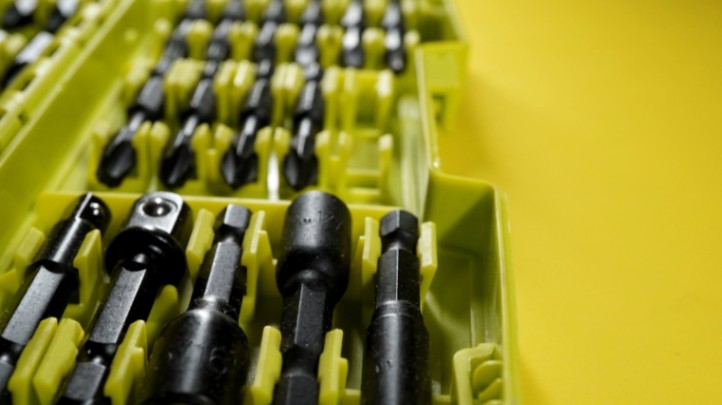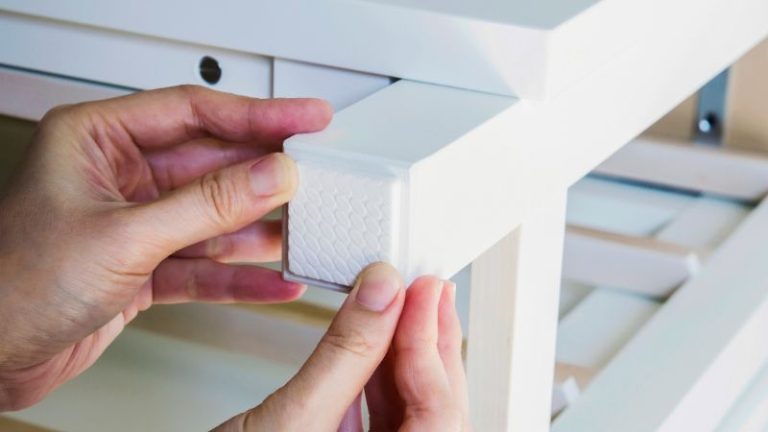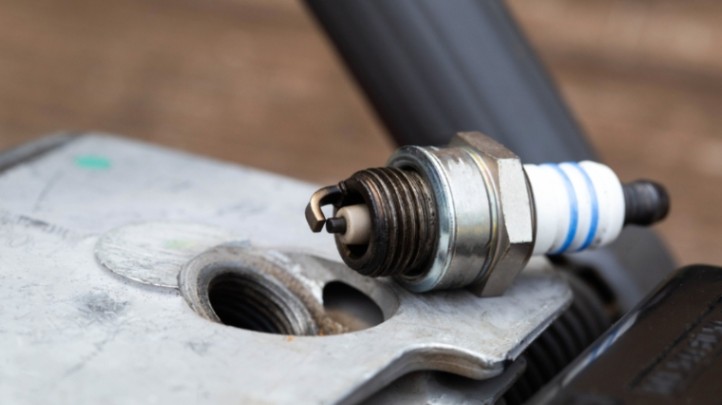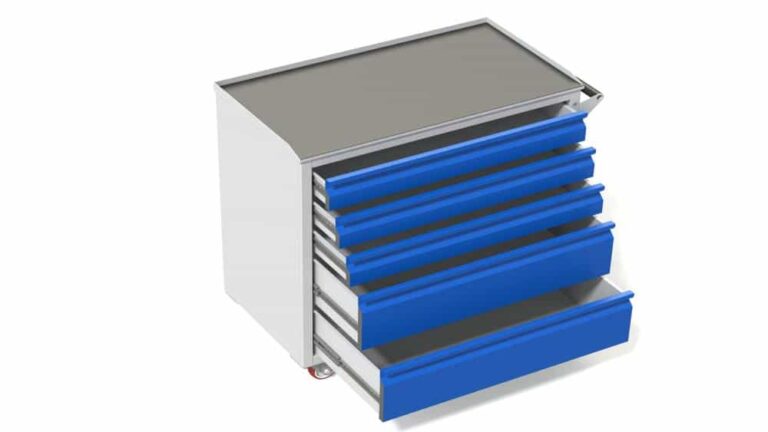When cutting stainless steel, using the right tools is crucial to achieving clean, precise cuts without damaging the material. One of the most effective tools for cutting stainless steel is a band saw, and selecting the best band saw blade is essential for optimal performance and results. In this article, we will explore the various factors to consider when choosing a band saw blade for stainless steel and provide a list of 5 of the best band saw blade for stainless steel available on the market today.
| No | Image | Products | Specialty | Price |
|---|---|---|---|---|
| 1 |  |
DEWALT Portable Band Saw Blade, (DW3984C) | Best for Cutting Precision | Check Price |
| 2 |  |
Bosch BS6412-24M Metal Cutting Band Saw Blade | Best for Metal Cutting | Check Price |
| 3 |  |
Olson Saw FB23193DB Band Saw Blade | Budget-Friendly Option | Check Price |
| 4 |  |
Milwaukee 48-39-0529 Compact Band Saw Blade | Durable and Versatile | Check Price |
| 5 |  |
MK Morse Master Cobalt Bi-Metal Blades | Professional Grade | Check Price |
Please note that these categorizations are based on general considerations and may vary depending on individual needs and preferences.

1: Understanding Stainless Steel
I. Composition and Properties
Stainless steel is popular for many applications due to its exceptional corrosion resistance, durability, and aesthetic appeal. It is composed primarily of iron and a combination of alloying elements such as chromium, nickel, and molybdenum. These alloying elements enhance the material’s resistance to corrosion and give it unique properties like high tensile strength and heat resistance.
II. Challenges of Cutting Stainless Steel
While stainless steel offers numerous advantages, it also presents challenges when cutting. Its hardness and toughness make it more difficult to cut than other materials. Stainless steel tends to work harden, making it harder and more resistant to cutting as it is machined. Heat formation during cutting can also cause the material to warp or distort, leading to imprecise cuts.
III. Importance of Choosing the Right Band Saw Blade
Selecting the appropriate band saw blade is crucial for achieving accurate and efficient cuts in stainless steel. The right blade can minimize heat build-up, reduce work hardening, and deliver clean, smooth cuts. On the other hand, using an inadequate blade can result in slower cutting speeds, increased blade wear, and poor-quality cuts that require additional finishing.
2: Factors to consider for choosing a band saw blade
When choosing a band saw blade for stainless steel, several factors should be taken into account:
I. Blade Material
The blade material plays a vital role in its performance and longevity. For cutting stainless steel, bi-metal blades are highly recommended. These blades have a high-speed steel tooth edge welded to a flexible alloy steel back. Combining these materials provides the blade with excellent cutting performance and durability.
II. Tooth Pitch
The tooth pitch refers to the distance between two adjacent teeth on the blade. For cutting stainless steel, a fine tooth pitch is generally preferred. A fine tooth pitch allows smoother cutting and reduces work-hardening risk. It also helps to dissipate heat more effectively, preventing the material from overheating.
III. Blade Width
The blade width determines the amount of material removed during each cut. For cutting stainless steel, a wider blade is generally recommended as it provides better stability and reduces the risk of blade deflection. However, the blade width should still be chosen based on the specific application and the desired cut quality.
IV. Blade Thickness
The blade thickness affects the cutting performance and the ability to withstand the cutting forces. Thicker blades are more rigid and can handle heavier cutting tasks. For stainless steel, a thicker blade is usually preferred to minimize blade deflection and vibration during cutting.
V. Teeth per Inch (TPI)
The number of teeth per inch on the blade, known as TPI, influences the cutting speed and surface finish. For stainless steel, a higher TPI is generally recommended for smoother cuts and better chip evacuation. However, the specific TPI required may vary depending on the thickness and hardness of the stainless steel being cut.
3: MECE Framework for Choosing the Best Stainless Steel Band Saw Blade
The MECE framework (Mutually Exclusive and Collectively Exhaustive) is valuable for organizing and analyzing information. We will use the MECE framework in this post to assist you in finding the optimum band saw blade for cutting stainless steel.
I. The MECE Framework is explained in detail
A significant issue is broken down into smaller, mutually exclusive, and collectively exhaustive sections using the MECE framework. This facilitates analysis and comprehension of the issue and ensures that all essential elements are included.
II. Consider the Following Factors
The MECE framework may be used to organize and evaluate the many elements that must be considered when selecting the optimal band saw blade for cutting stainless steel. These elements are as follows:
- Band Designs Blades for Saws (high-speed steel, bi-Metal, carbide-tipped)
- The geometry of Teeth (positive)
- Width and thickness (thicker, wider)
- Material (carbide-tipped) (carbide-tipped)
- Set of Teeth (moderate)
- Tooth Space (moderate)
- Limiting Your Options
4: Best Stainless Steel Band Saw Blades Reviews
Now that we’ve covered the many elements to consider when selecting a band saw blade for cutting stainless steel let’s look at some of the finest alternatives on the market.
The following are some of the best stainless steel band saw blades:
I. DEWALT Portable Band Saw Blade, 32-7/8-Inch, .020-Inch, 24 TPI, 3-Pack (DW3984C)
When cutting through metal, a quality bandsaw blade can make all the difference, and the DEWALT Bi-Metal Portable Bandsaw Blades are no exception. These blades include a Matrix II High-Speed Steel Edge for heat and wear resistance and an 8% cobalt content for increased durability. The RC 65-67 tooth hardness improves wear resistance, making these blades suitable for cutting a wide range of metals.
The alloy steel backer, which offers fatigue resistance, is a prominent feature of these blades. An alloy steel backer implies that the blades can survive repeated cutting without getting worn or damaged.
The DEWALT Bi-Metal Portable Bandsaw Blades are versatile enough to cut heavy, medium, and thin gauge metal. They come in three 32-7/8-inch blades, giving you enough material for a range of cutting applications.
These blades are intended for use with portable bandsaws, making them simple to install and operate. Because the blades are flexible enough to bend over curves and tight corners, they are great for cutting a wide range of shapes and sizes. The Matrix II High-Speed Steel Edge produces a clean and accurate cut, making these blades suitable for various applications.
a. Highlighted Feature
- High-speed steel edge Matrix II for heat and wear resistance
- Rc 65-67 tooth hardness for enhanced wear resistance
- 8% cobalt content for durability and wear
- The Backer is made of alloy steel for fatigue resistance.
II. BOSCH BS6412-24M 64-1/2-Inch by 1/2-Inch by 24TPI Metal Bandsaw Blade
The blade’s unique tooth design is developed to deliver optimum cutting performance, allowing users to cut through complex materials easily. The Bosch band saw blades are made of high-quality steel, which aids in heat resistance during operation. Consequently, the blade has a longer lifetime, enabling users to make more cuts before needing to replace it.
The blades are available in various sizes and kinds, allowing customers to choose the best one for their unique requirements, whether cutting wood or metal. Bosch band saw blades are compatible with various popular band saws, including 9-Inch and 10-Inch variants.
Bosch countersinks are an excellent addition to any electrical, plumbing, or HVAC contractor’s toolset. These countersinks are intended to deburr and chamfer apertures to pre-drilled holes precisely. They cut neatly through various materials, making them an excellent choice for any work. Countersinks are available in various sizes and materials, including regular high-speed steel and solid titanium-coated bits. This implies that users may get excellent outcomes while dealing with rugged materials.
b. Highlighted Feature
- High-quality steel construction
- Heat buildup resistance
- Optimized tooth geometry for cutting efficiency
- For various uses, several sizes and varieties are available.
- Specifically designed to accommodate popular brand band saws
- BOSCH countersinks for deburring and chamfering are also available for wood and metal cutting.
- Cutting complex materials using high-speed steel and titanium-coated bits.
III. Olson Saw FB23193DB 1/2 by 0.025 by 93-1/2-Inch HEFB Band 3 TPI Hook Saw Blade
The Olson Saw FB23193DB band saw blade is ideal for woodworkers and DIY enthusiasts who want accurate cuts. This blade is 1/2 inch broad by 0.025 inches thick by 93-1/2 inch long. It features a hook tooth design with 3 teeth per inch (TPI), which makes it perfect for cutting through various kinds of wood.
The durability of this saw blade is one of its outstanding features. It’s built of high-quality materials, so it’ll last longer and perform better than other saw blades on the market. Furthermore, it is flexible, making it simpler to bend and handle while cutting curves and other difficult cuts.
The sharpness of the Olson Saw FB23193DB is another outstanding characteristic. The hook teeth are razor sharp and can readily cut through the hardest timbers. This means you can make clean, rapid cuts, saving you time and effort. It also implies that your end product will have a smooth and clean edge.
This saw blade provides excellent performance. It is built to operate smoothly and silently, essential while making lengthy cuts. The teeth are evenly spaced, which reduces binding and improves precision. Because the blade is so sharp, you won’t have to press down on the saw as complex to produce a cut, which reduces fatigue.
Finally, the Olson Saw FB23193DB is simple to set up. It comes with straightforward instructions, even for individuals who have never replaced a band saw blade. The blade is tensioned to the optimum level, and the teeth are perfectly adjusted, ensuring a clean and accurate cut every time.
c. Highlighted Feature
- Simple installation and operation
- Made in China
- Simple to use and long-lasting
- Hard or soft wood, plastic, mild steel, and nonferrous metal can all be cut with this tool.
- All vertical, stationary, floor-standing 2-wheel band saws are compatible.
- Heavy-duty, commercial-grade tools for industrial, woodworking, DIY, and professional craftspeople.
IV. Milwaukee 48-39-0529 Compact Band Saw Blade 35-3/8-Inch 18TPI, 3 Pack
The Milwaukee 48-39-0529 Compact Band Saw Blade 35-3/8-Inch 18TPI, 3 Pack is an essential tool for maximizing the performance of your compact band saw. With its 18 TPI (teeth per inch), this blade allows you to make straight and accurate cuts in various materials. Whether working with strut, conduit, angle iron, copper tube, threaded rod, or pipe, this blade delivers exceptional durability and longer tooth life.
The Milwaukee band saw blade’s tooth form, pitch, and set ensure consistent and precise cuts with every use. You can rely on its quality to provide reliable performance time and time again. The pack includes three blades, providing excellent value for your money and ensuring you always have a spare blade.
Whether you’re a professional tradesperson or a DIY enthusiast, the Milwaukee 48-39-0529 Compact Band Saw Blade 35-3/8-Inch 18TPI 3 Pack is a worthy investment. Its versatility and durability make it suitable for various metal-cutting applications. Achieve straight, accurate cuts effortlessly and trust in the long-lasting performance of this band saw blade.
d. Highlighted Feature
- Precision-formed teeth create fast, clean cuts.
- Matrix II high-speed steel teeth excel in metal-cutting applications.
- Alloy backing steel extends blade life.
- Designed for cutting common materials 5/32″ – 3/16″ thick and tough materials 3/16″ – 5/16″ thick.
- Blade Dimensions: 35-3/8″ x 1/2″ x .020″
- TPI/Grit: 18 TPI
- (3) 18 TPI Standard / Deep Cut Portable Band Saw Blades Includes
V. MK Morse ZWEP441014MC Master Cobalt, Bimetal Portable Band Saw Blade
The band saw blades help cut various materials, including stainless steel. The appropriate blade is essential for ensuring efficient and accurate cuts. The MK Morse Bi-Metal Master Cobalt Blades are an excellent option for individuals who wish to cut stainless steel with the most significant results.
The MK Morse Bi-Metal Master Cobalt Blades have Matrix II cutting edges that are heat and wear resistant. Because of this cutting-edge technology, the blades can tackle demanding applications and endure longer than other blades on the market.
The MK Morse Bi-Metal Master Cobalt Blades have the most extended blade life. These premium blades have the most incredible life span of any blade on the market, making them an excellent long-term investment for individuals looking to save money.
MK Morse Bi-Metal Master Cobalt Blades include variable pitch teeth that assist in eliminating vibrations during cutting. This vibration reduction results in smoother cuts and a more pleasant cutting experience.
e. Highlighted Feature
- Matrix II cutting edges have a longer life than competing blades.
- Features of the Master Cobalt blade for increased durability and wear
- Variable tooth pitch for less vibration and better cut finish
- Cutting edge that is shock-resistant for cutting any machinable metal
- Made in the United States
- Size: 44-7/8″ x 1/2″ x.020″ (1140mm X 12.7mm X .50mm)
- TPI: 10/14, Raker is a set.
- Three blades for each box, twenty boxes per carton
6: How to Choose the Best Band Saw Blade for Stainless Steel
Cutting stainless steel requires precision and the right tools. When it comes to band saws, choosing the best blade for the job is essential for achieving clean, accurate cuts without damaging the material. Here are some key factors to consider when selecting a band saw blade for stainless steel:
I. Blade Material
Stainless steel is a tough material, so choosing a blade made from high-quality materials is important. Bi-metal blades are highly recommended for cutting stainless steel. These blades have a high-speed steel tooth edge welded to a flexible alloy steel back. The combination of these materials provides excellent cutting performance and durability.
II. Tooth Pitch
The tooth pitch refers to the distance between two adjacent teeth on the blade. For cutting stainless steel, a fine tooth pitch is generally preferred. A fine tooth pitch allows smoother cutting and reduces work-hardening risk. It also helps to dissipate heat more effectively, preventing the material from overheating.
III. Blade Width
The blade width determines the material removed during each cut. For cutting stainless steel, a wider blade is generally recommended as it provides better stability and reduces the risk of blade deflection. However, the blade width should still be chosen based on the specific application and the desired cut quality.
IV. Blade Thickness
The blade thickness affects the cutting performance and the ability to withstand the cutting forces. Thicker blades are more rigid and can handle heavier cutting tasks. For stainless steel, a thicker blade is usually preferred to minimize blade deflection and vibration during cutting.
V. Teeth per Inch (TPI)
The number of teeth per inch on the blade, known as TPI, influences the cutting speed and surface finish. For stainless steel, a higher TPI is generally recommended for smoother cuts and better chip evacuation. However, the specific TPI required may vary depending on the thickness and hardness of the cut stainless steel.
VI. Blade Coating
Some band saw blades have special coatings that enhance their performance when cutting stainless steel. These coatings can reduce friction, improve cutting efficiency, and prolong the blade’s lifespan. Popular coatings include titanium nitride (TiN) and chromium nitride (CrN).
VII. Manufacturer Recommendations
It’s always a good idea to consult the manufacturer’s recommendations for your specific band saw model. Manufacturers often provide guidelines on the recommended blade types and specifications for cutting stainless steel.
VIII. Application-Specific Considerations
Consider the specific application and cutting requirements. Different types of stainless steel may have varying hardness and thickness, requiring different blade specifications. Additionally, if you’re cutting intricate shapes or curves, a blade with a narrower width and a higher TPI may be more suitable.
By considering these factors and selecting a band saw blade that meets your requirements, you can ensure optimal cutting performance and achieve precise, clean cuts on stainless steel.
Safety should always be a top priority when operating a band saw or any other power tool. Follow the manufacturer’s safety guidelines and use appropriate protective equipment to ensure a safe working environment.
7: Proper Blade Maintenance
Proper maintenance is essential to maximize the lifespan and performance of your band saw blade for stainless steel. This includes regular cleaning, blade tensioning, and monitoring for signs of wear or damage. It is important to follow the manufacturer’s blade maintenance guidelines and promptly replace worn or damaged blades.
9. Conclusion
Finally, the paper highlighted the characteristics of an excellent band saw blade for cutting stainless steel. The wavy tooth set reduces stripping on thin workpieces, and the M-42 high-speed steel tooth edge resists heat and wear. The Tuff tooth design for minimizing tooth strip page, the bimetal capacity for cutting various metals, and the ability to handle cuts in varied shapes were essential.
Based on these specifications, a band saw blade with a Tuff tooth design and bimetal capabilities, as well as a wavy tooth set and M-42 high-speed steel tooth edge, is suggested for cutting stainless steel. This will give the finest possible outcomes for your cutting requirements.
Choosing the appropriate blade for the operation is essential to obtain the most remarkable results. When cutting stainless steel or another material, it is vital to consider the blade that will give the best performance and efficiency for your particular job.
You may also like these posts!
- Best Drill Bit For Drilling Hardened Steel: In 2023 Reviews[Updated]
- Best Drill Press Under 300: In 2023 Reviews & Guide[Updated]
- Best Corded Drill Under $100: Reviews, Buying Guide
- Best Cordless Drill Under $50 In 2022 – Reviews & Buying Guide
- Best 12v Cordless Drill In 2022 – Reviews & Buying Guide







